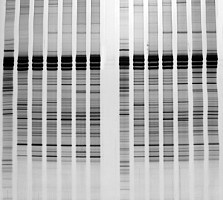16S rRNA Targeted DGGE Fingerprinting of Microbial Communities
互联网
914
The past decades have seen the staggering development of molecular microbial ecology as a discipline that uses the detection of so-called biomarkers to monitor microbial communities in environment samples. A variety of molecules can be used as biomarkers, including cell-wall components, proteins, lipids, DNA or RNA. Especially, the application of small subunit ribosomal RNA (rRNA) and the corresponding genes have proven invaluable for advances in microbial ecology. Several types of fingerprinting methods have been developed for the description of microbial communities in environmental samples. Among the most commonly used approaches is denaturing gradient gel electrophoresis (DGGE) of PCR-amplified fragments. DGGE allows separation of DNA fragment mixtures of equal length depending on their sequence. The separation is based on their sequence-specific melting point in a polyacrylamide gel with a gradient of a denaturant chemical (generally a combination of urea and formamide). DGGE allows for a rapid analysis and comparison of microbial communities. Compositional diversity can be visualized using DGGE where each band in principle represents a bacterial phylotype. After staining bands are visualized at each position in the gel where DNA molecules stopped migration. In principle, DGGE fingerprinting can resolve single base pair differences.









